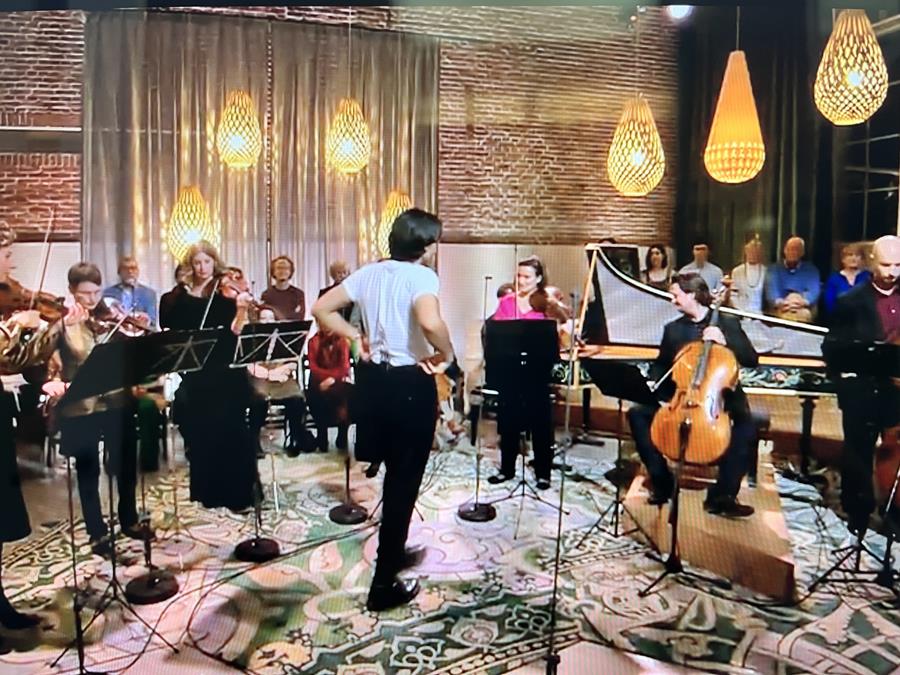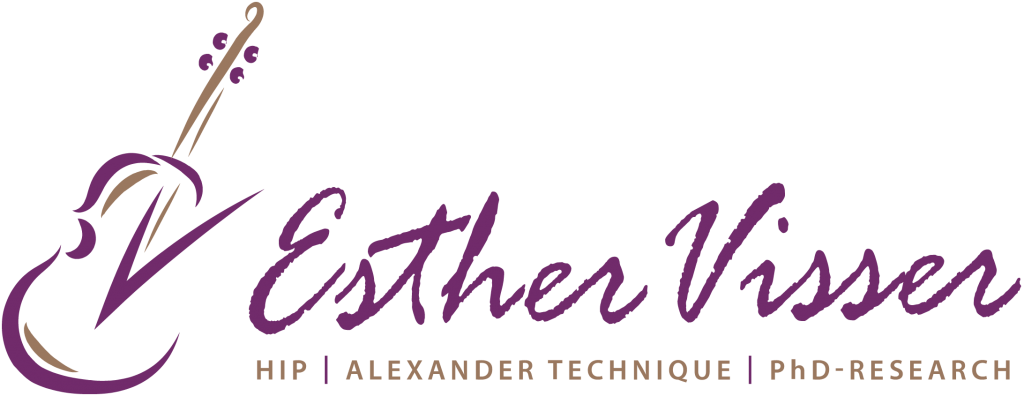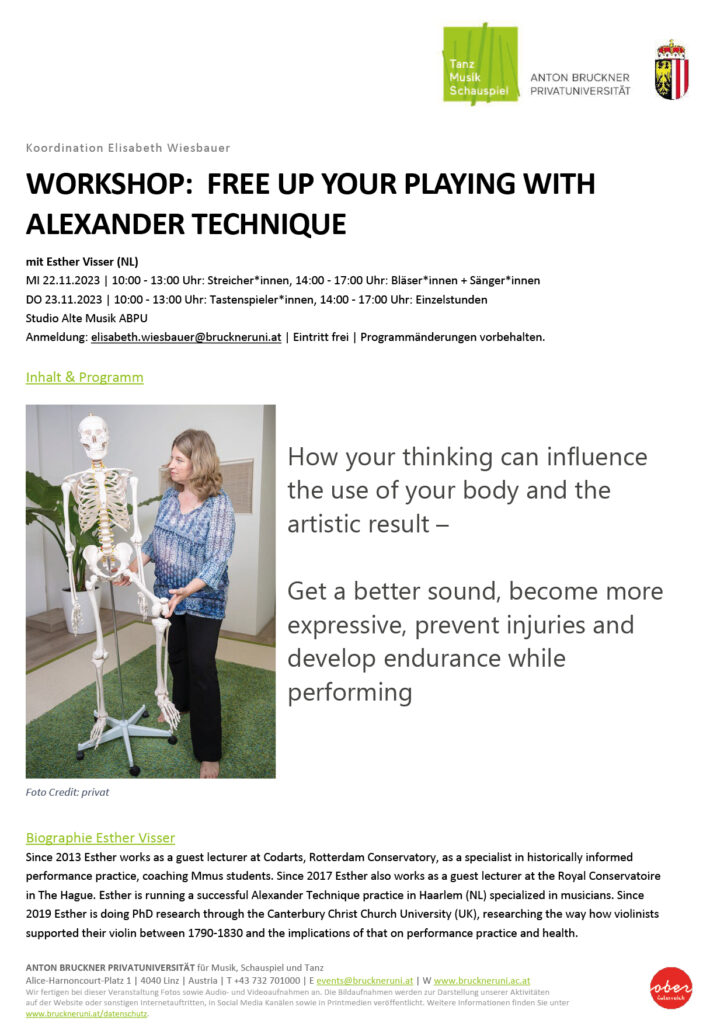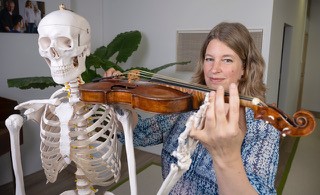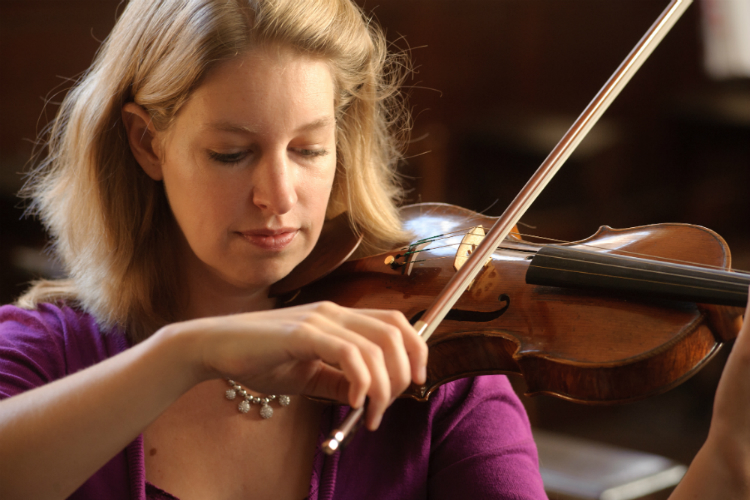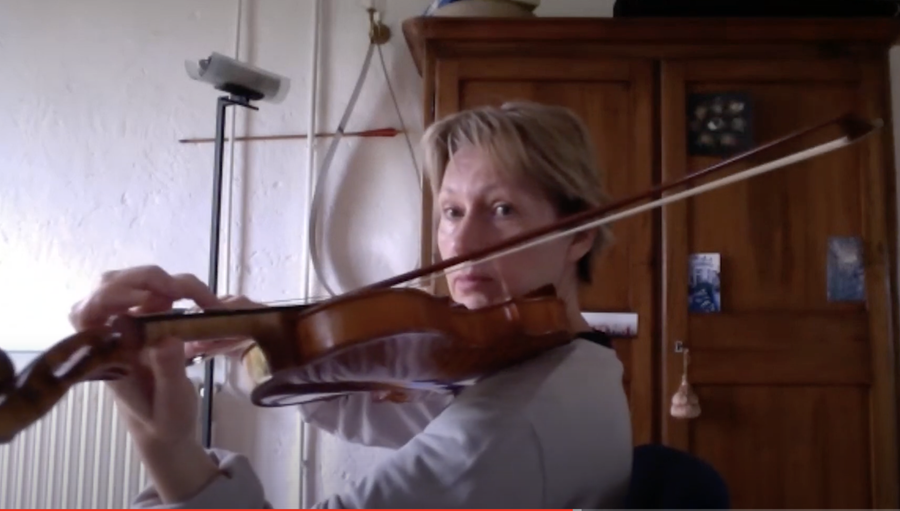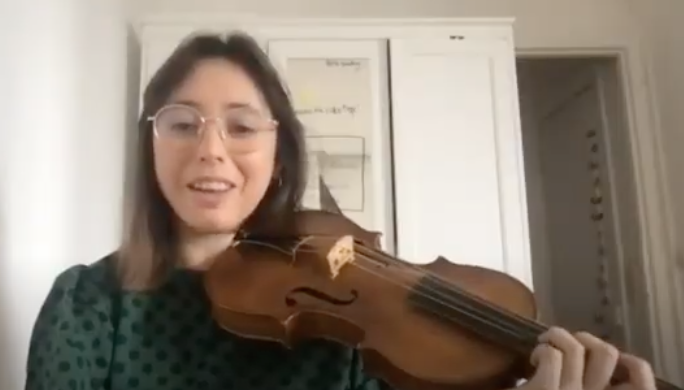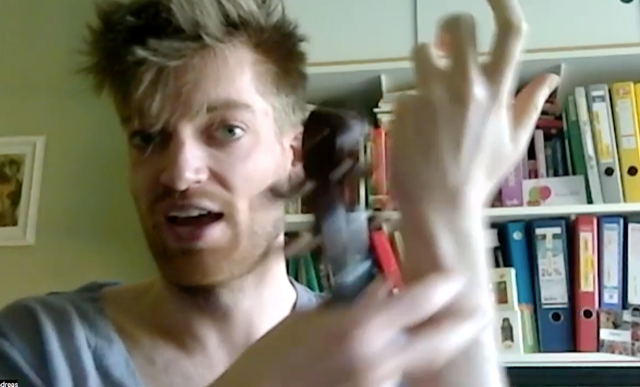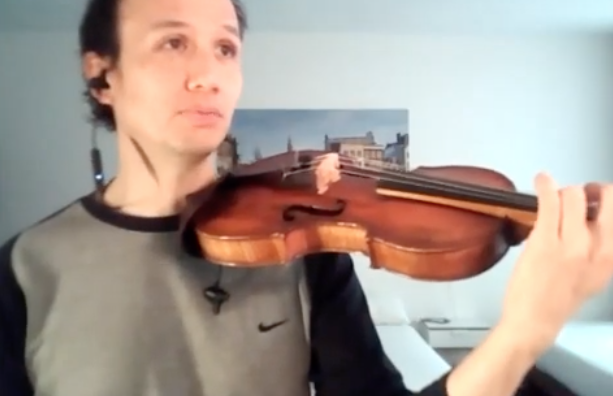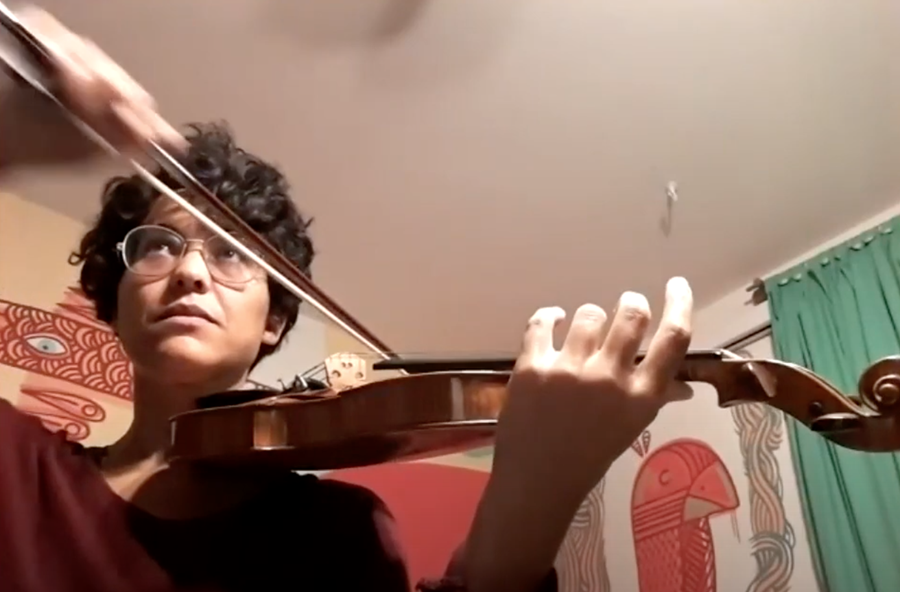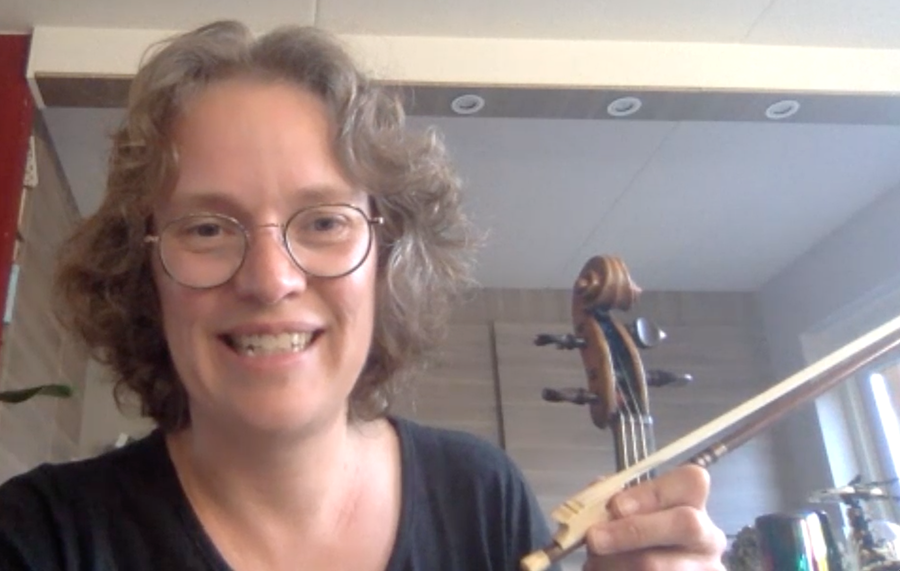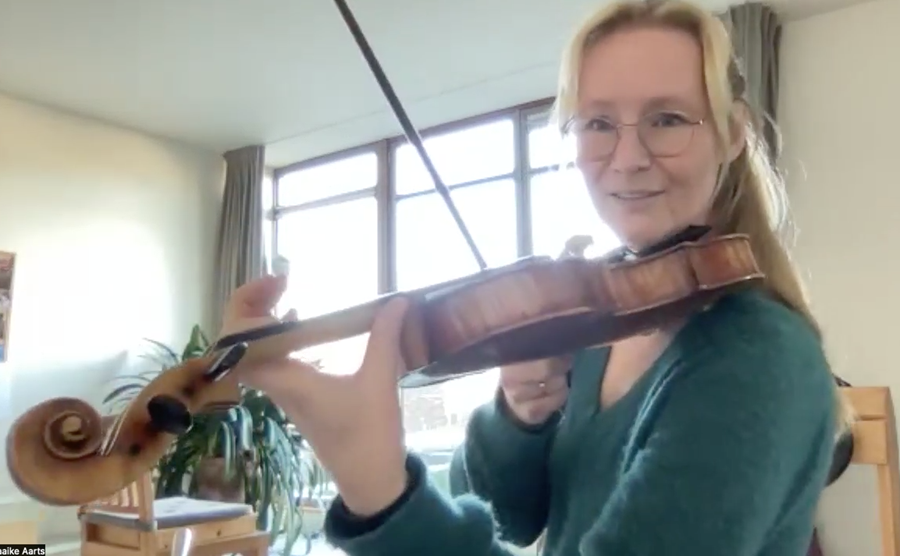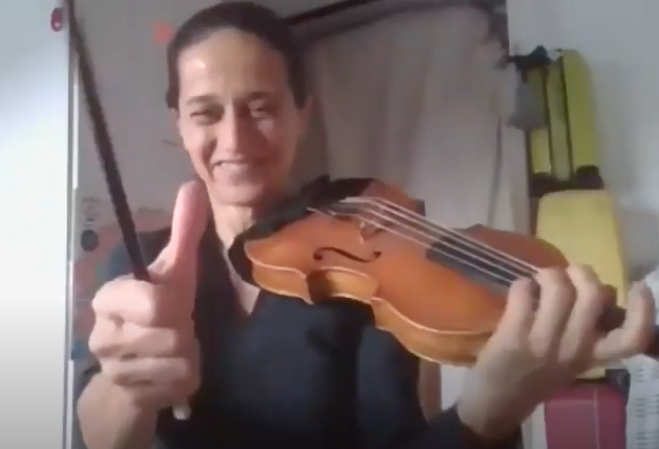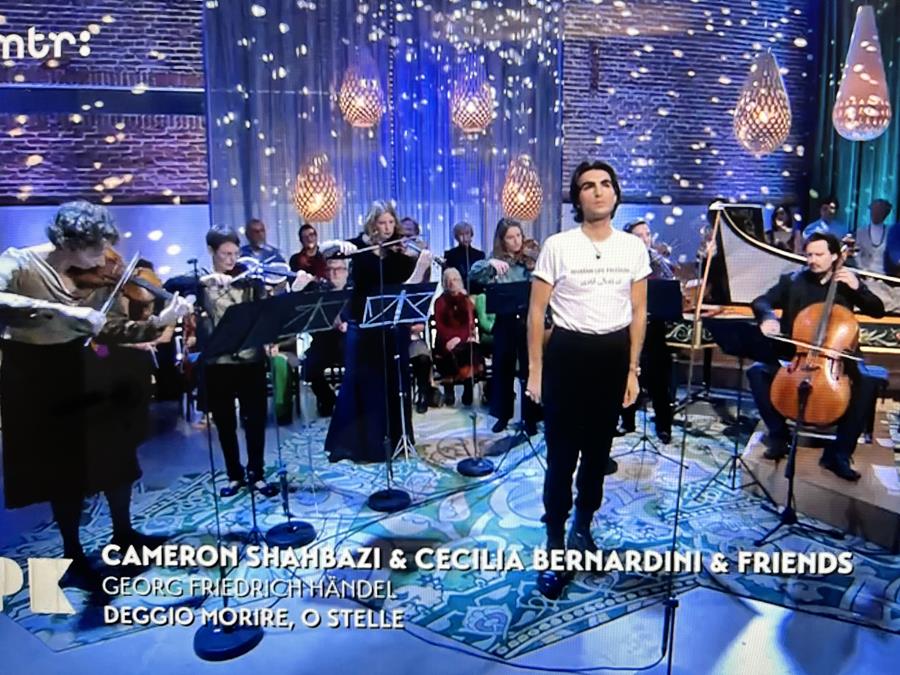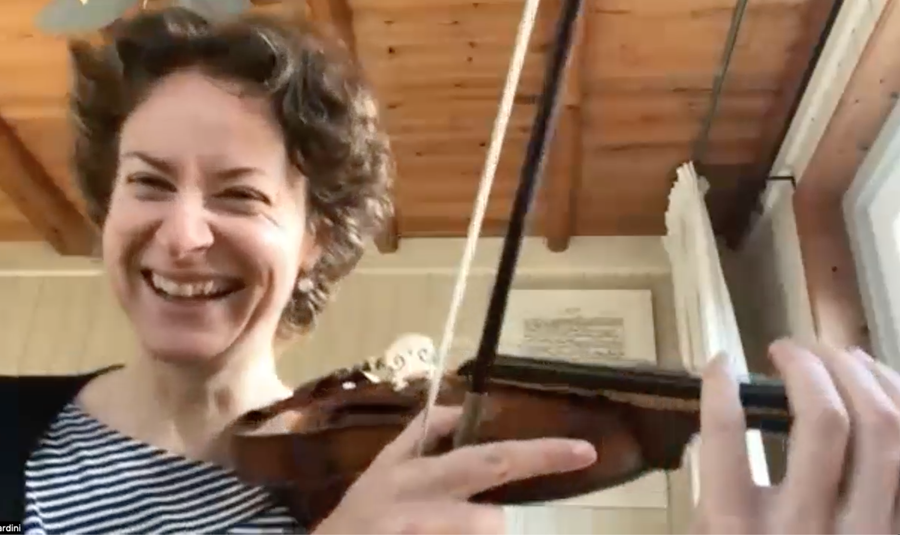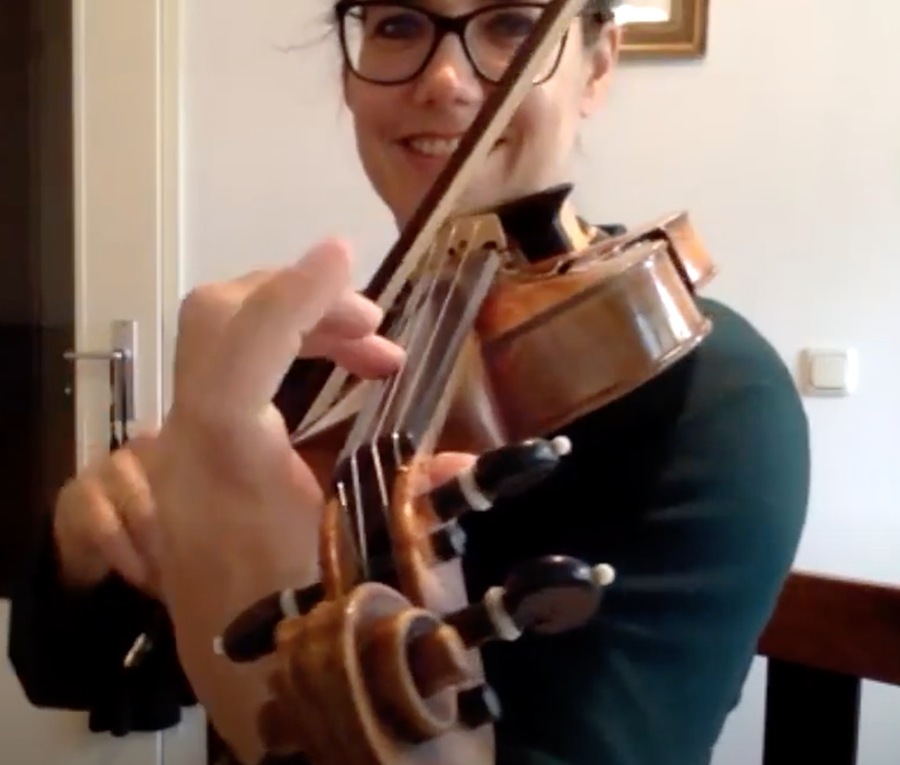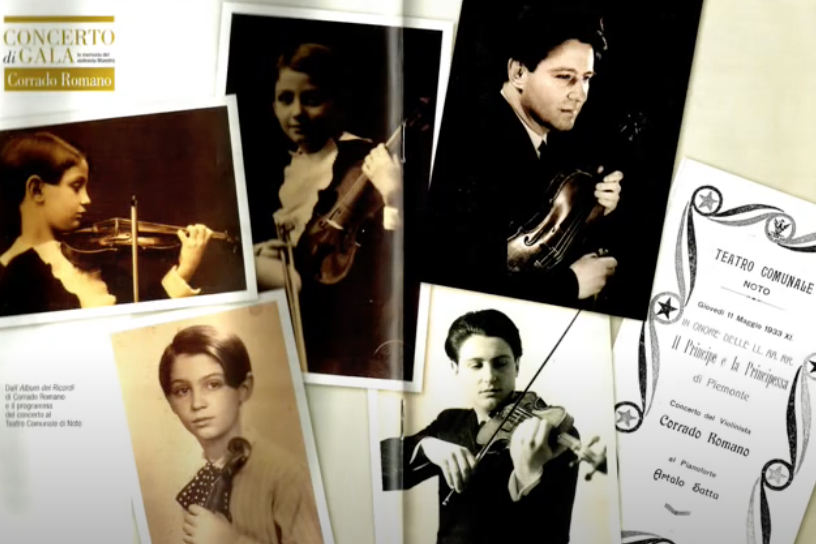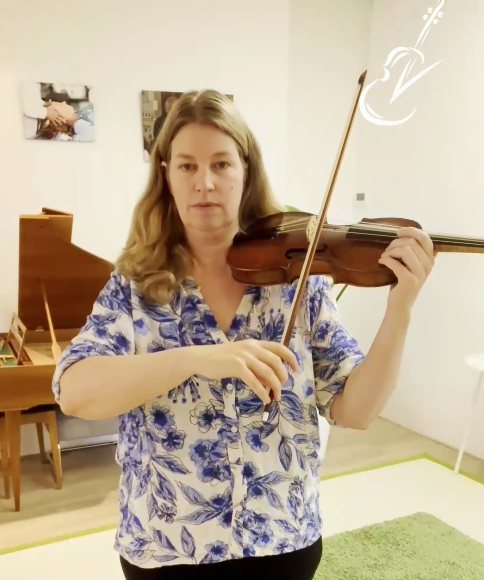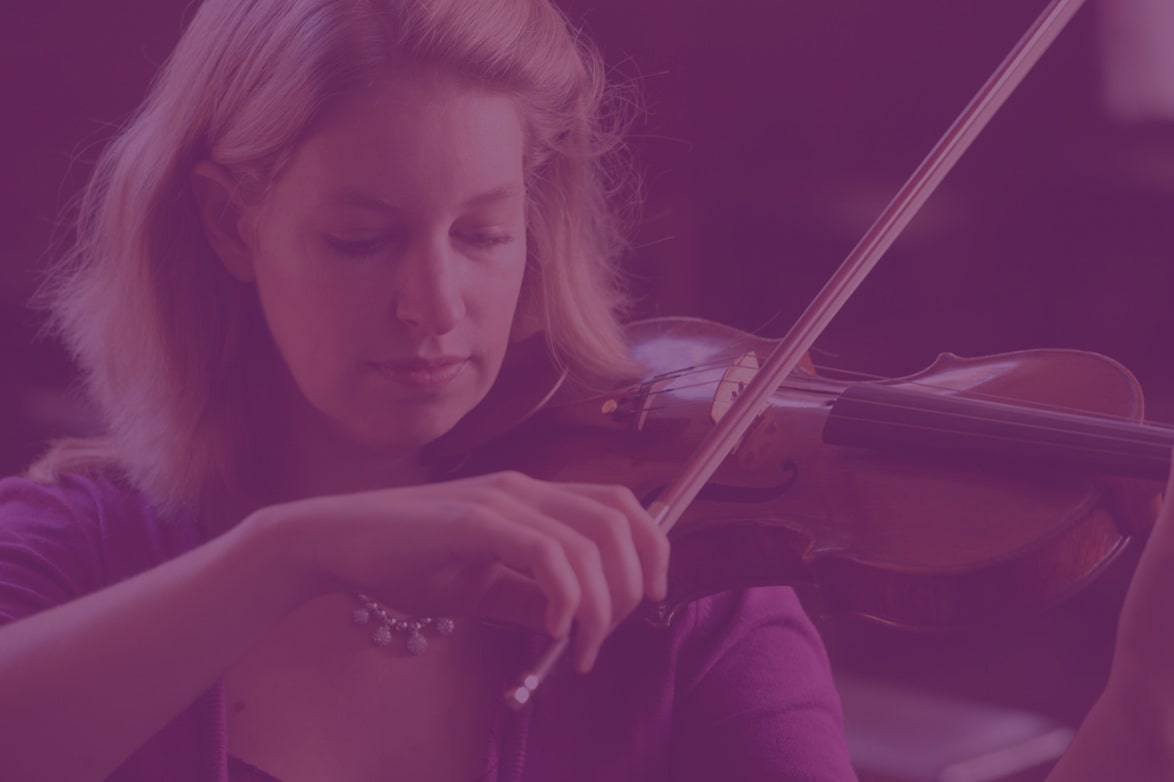
The 20th week of my experiment
Hi everyone,
This is the 20th week of the experiment on playing without a shoulder rest and / or chin rest. Here are some updates and some feedback.
Thank you for sending me your videos, it’s really important for my research. Some people just finished the whole 12 week program, sent their last video and filled out the exit survey. Fantastic, thank you so much! The majority however is still about half way in the program and that is perfectly fine, please do take all time you need and don’t hurry.
It is still possible to start taking part in the experiment. Many people already filled out the entrance survey. Thanks. If you didn’t do it yet, please do so before you start the lessons.
If you know more people who like to join, for example starting this or next month, this is still possible through my website. If you missed the newsletter last week, you can still read it here. There is a collection of past newsletters at my website available too.
Please be welcome to join the Zoom session next Wednesday 11.00 AM (Dutch time) if you want… Just to meet or to ask some questions. Would be nice to meet up. You can watch Zoom sessions back on the login page where the video lessons are, as well.
“I think your research is very important and I think you are very right on all the points you raised. I am so thankful that your talk about this, because almost every musician has unhelpful habits.”
– Jun Keller, Vienna Philharmonic Orchestra,
participant in the experiment
20th Zoom session
Last Wednesday we did a 20th zoom session with two participants of this experiment, James and Cindy. If you want to watch it: I recorded the session and there is a link to it in the login page under the video lessons.
I recovered from the flu in the mean time, thankfully.
James Jennings is a hip violinist, he just returned home in Marseille from his tour with le Concert d’Astrée performing Julio Cesare in Amsterdam and also visiting me in my Alexander practice in Haarlem in The Netherlands.

We worked on how to sit in orchestra while playing, as you can see here in the picture above. By using his back in a healthier way (really using the sitting bones, balancing the head, calming the shoulders, thinking the back lengthen and widen) it became much easier for James to support his violin in an almost horizontal plane. For years, he was used to let his violin slope downwards while playing, which unconsciously was causing him a lot of tension in his shoulder muscles and which made it tiring for him to play long pieces in the orchestra. He adopted this different way of balancing the violin very quickly, it was a joy to work with him!
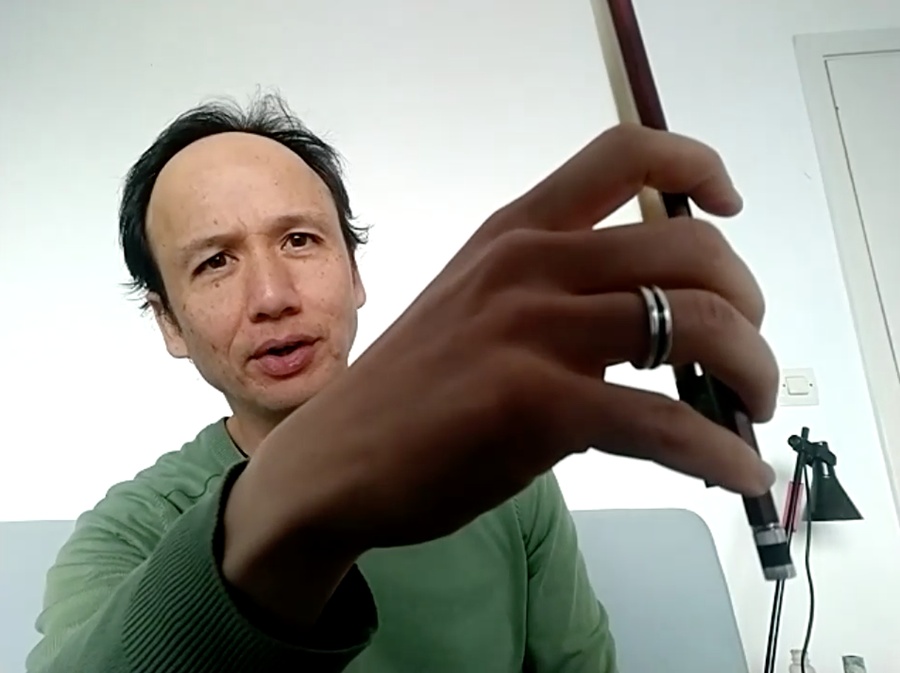
Back in France, James told me in the zoom session that he experiences that his different way of balancing his violin really changes the right hand and the way he is using the bow. The new way he is using vibrato now (after having had an arm vibrato before) also is changing his way of using the bow. He sais:’ Everything clearly is connected’. I asked James to explain it a bit more in detail and he told us that he had a kind of ‘arm vibrato way of using his right arm’. The fact that is is not holding the violin with his neck muscles is really helping to free-up the use of both arms, he said.
The trapezius muscles that were bothering him before (right side as well) are feeling softer now. He applied what we worked on with the legs when he played in orchestra the days after. He brings the knees now more towards each other (he was used to use wide legs and he blocked his body with that). He now checkes often if his hips are ‘available’. The more horizontal position of the violin makes it lighter for him as well, the shifts are easier and it is less tiring.
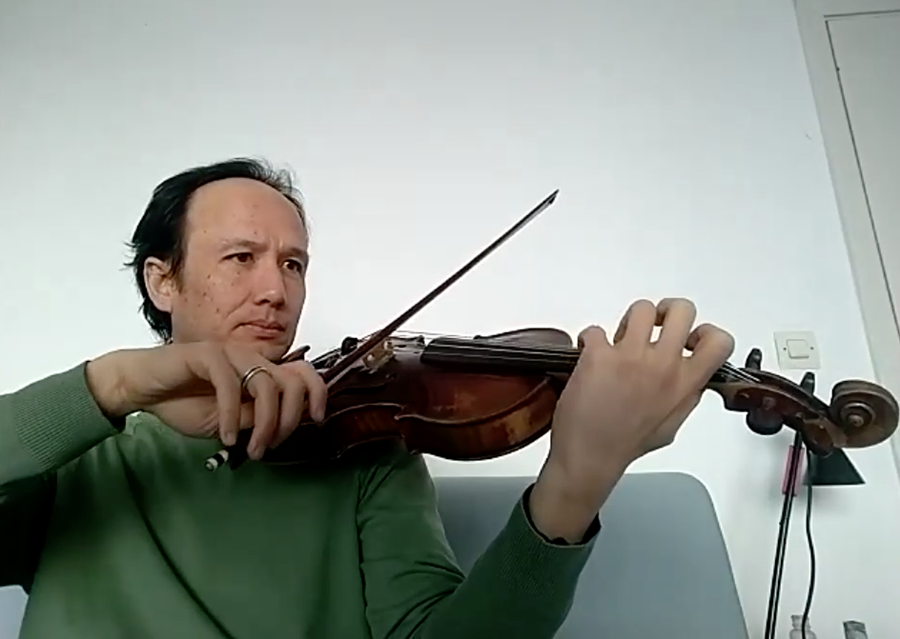
James also shared with us that he agrees with Andreas (see last newsletter) that the finger joints themselves can not be too flexible, because in that case the hand can not move in the wrist. The fingers need to be stable. Some teachers also told him ‘to have soft fingers’ before, but he now realises that in fact he does not agree with that. The hand needs to be soft, but the fingers need to be firm at the same time.
There also might me a relation between the legato style of playing that started in the 19th century and the way violinists balanced their instrument more with both the head and the left hand. It’s something I should work out and research more. Please do let me know if you have ideas about this.

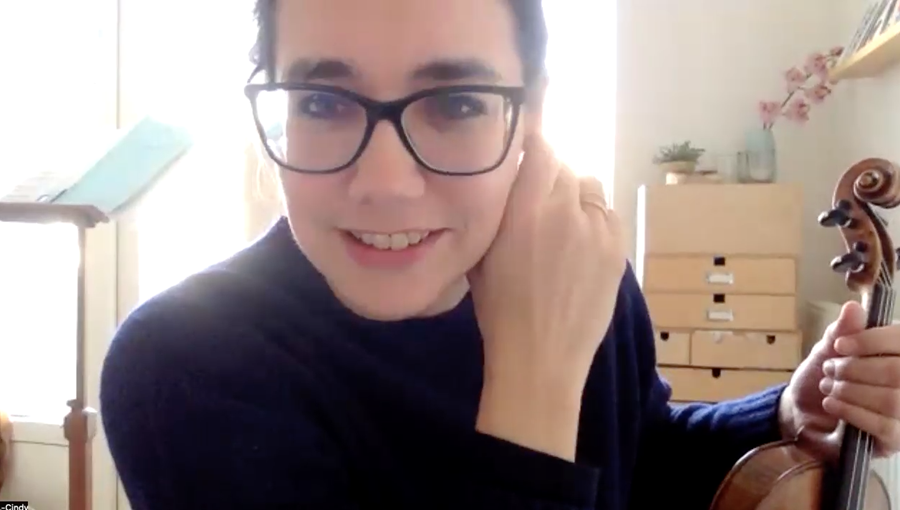
Then Cindy Albracht from The Netherlands joined our conversation and shared with us that her teacher in Vienna, Gerhard Schulz from the Alban Berg Quartet, always told her to have an ‘up’ feeling in the fingers while playing. So not to keep them always on the string, and also while playing the finger. He said it has an amazing influence on the tone and the vibrato. So Cindy thinks that there is a ‘thinking in activity’ in the fingers that can help the vibrato a lot. Very interesting! James also added that this thought of ‘up’ can help to release tension in the fingers.
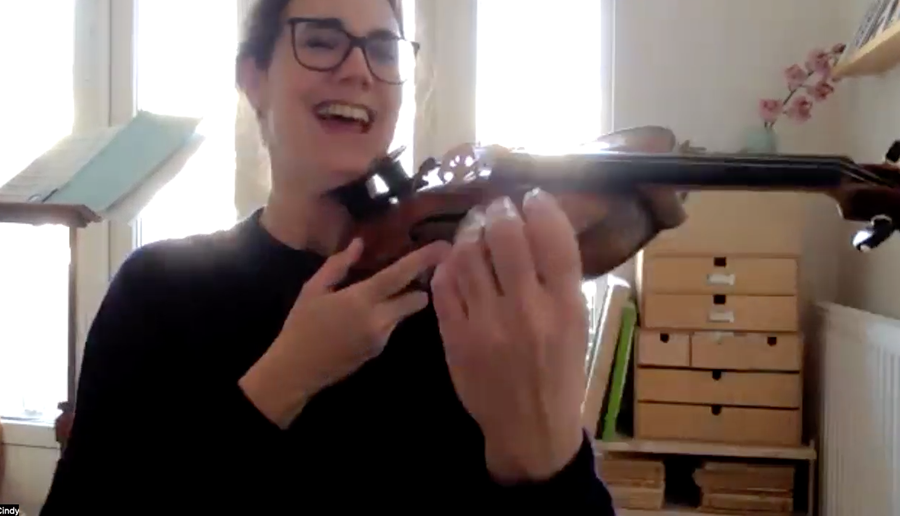
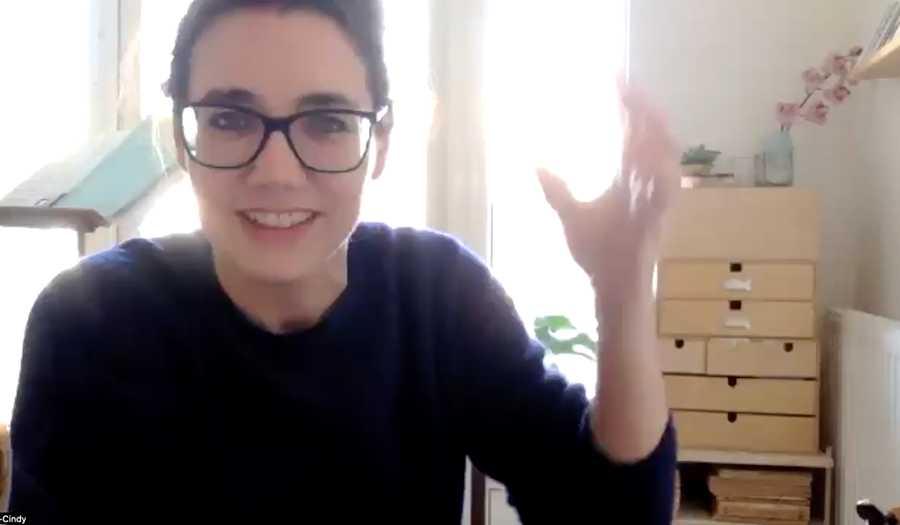
For Cindy the vibrato lesson is easy, as she already used a hand vibrato before. For her, making position shift is much harder. She is still struggling a bit with the direction of her head, to keep it in the middle. She still have to come to my practice to let us have a look at her chin rest. So I told her that for our experiment it’s absolutely fine if she looks a little bit to the left, in order to reach the chin rest with her jaw while shifting downwards. I am already very happy if people are not completely looking over their bridge towards their fingers, which I think is not a good idea for the neck.
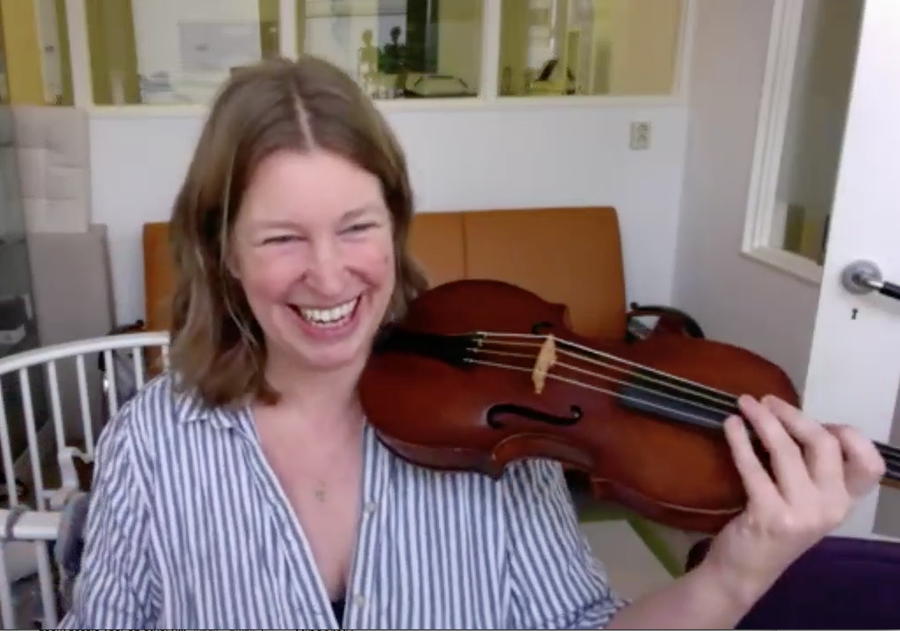
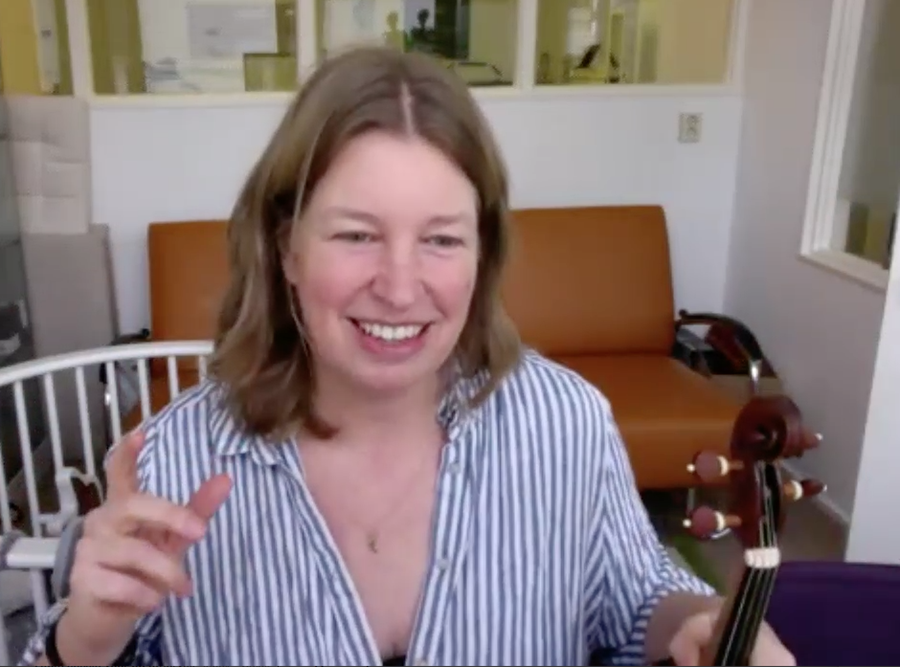
It was very nice to hear that Cindy is not using any ‘weight’ of her head to balance the violin. The jaw is just touching the chin rest and only on the way backwards in position shifts she needs to remember to use the head a bit more. When I asked her to show this to us, I saw that during her shift downwards her thumb was losing the support of the violin, it suddenly was sticking out above the violin.

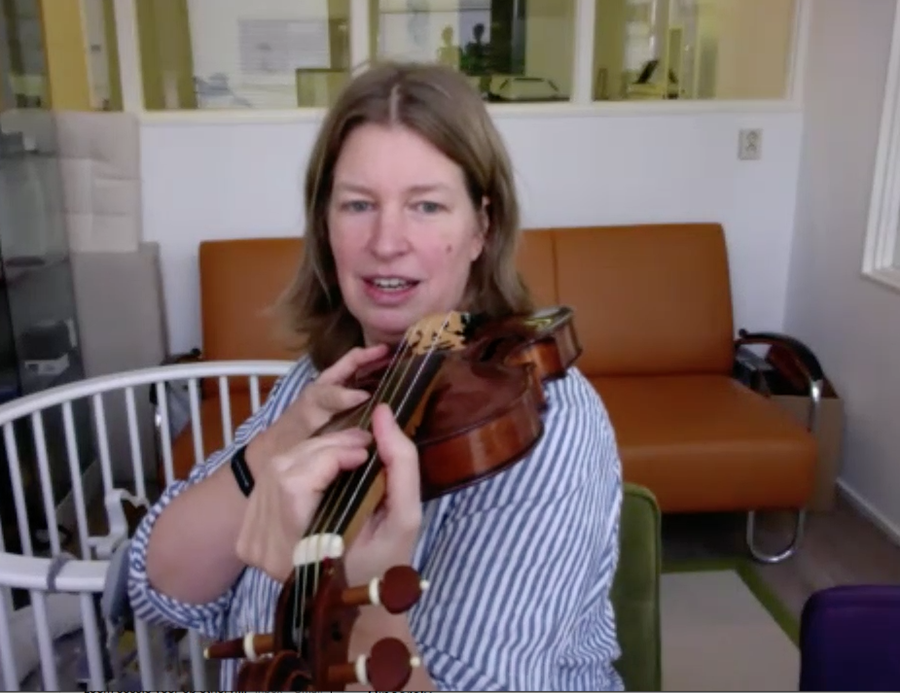
Here (in the photo above) I exaggerate what is happening. Sio I suggested to Cindy to keep practising that the violin is being support ON the thumb while sliding back in a position shift.
Cindy said: ‘Yes, this is the thing!’. She was managing beautifully afterwards and doing it beautifully. It’s a delicate difference, but very important. To keep supporting the violin, her thumb needs to be a bit more straight, we discovered. It’s more important that the thumb can keep supporting the instrument than that is absolutely has a round shape. It depends on everyones length and shape of the thumb.
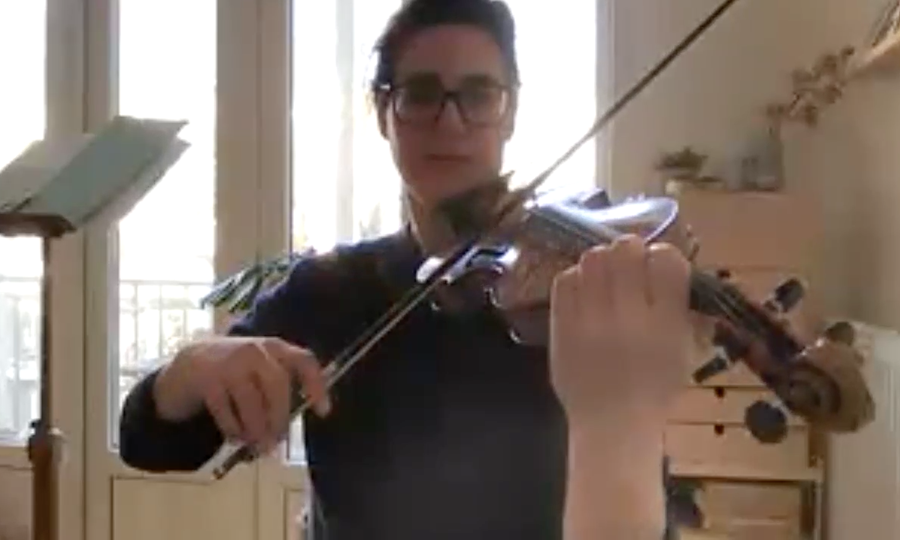
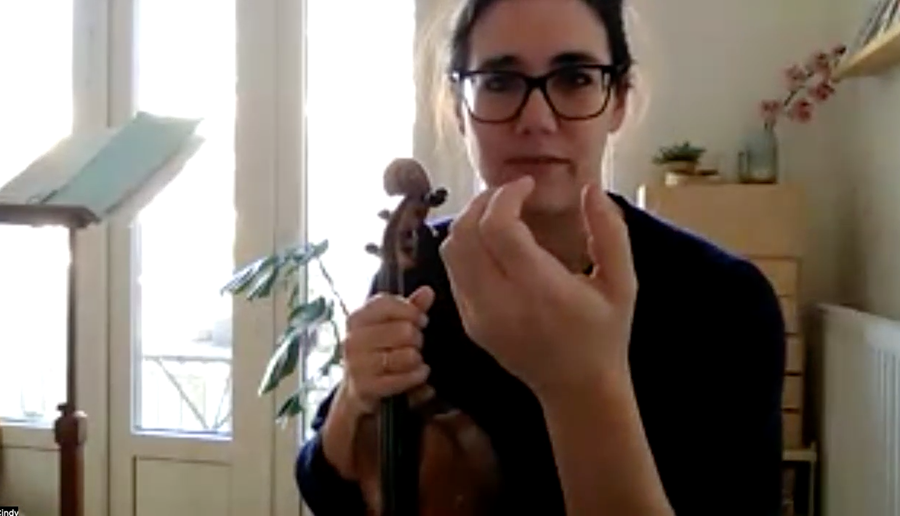
We also saw last week with Andreas that the thumb also can be a bit straighter (but not overstretched, of course).
Cindy her next step in this experiment is the double stops lesson. She told us that already she is experiencing a difference while practising double stops, she feels a different balance while playing.
We also discussed a bit what Andreas and me had been talking about last week, about what a musician thinks while playing. Cindy shared with us, that for her it does not work when she goes too much ‘in the emotions’ while performing. She needs some disconnection with the emotion on stage, but in the preparation she thinks a lot about the emotions of course. Too much focus on technique also does not work, it’s a combination. She likes when conductor asks ‘play like you do a prayer’, playing with that kind of intention. That really helps her to stay calm in her body, in combination with sometimes thinking about her sitting bones and so on. When she is losing things, she is too much ‘into it’ or she is getting primary reactions / thoughts like ‘they don’t like it, I did it wrong’ etc. When she connects with the kind of ‘prayer’ state of mind, those thoughts go away. It also helps her to trust that she does not need to do great things. The body will remember what to do. It’s very interesting to hear, thanks, Cindy!
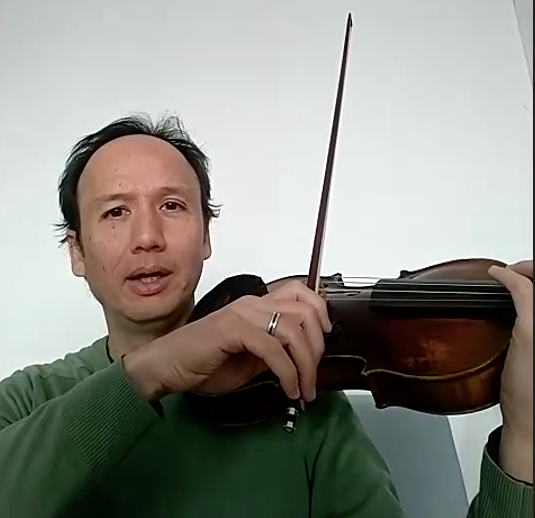
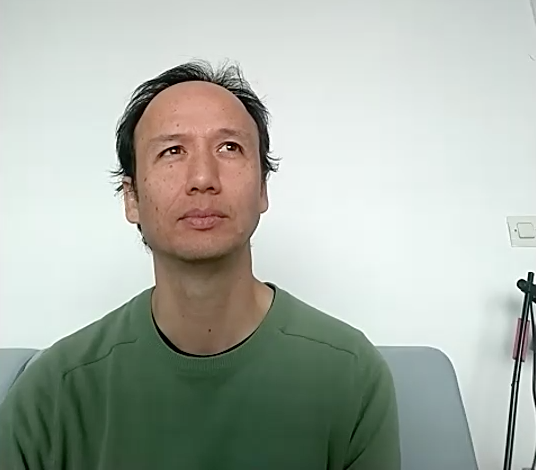
James shared that for him, playing well in orchestra is a question of ‘less is more’. The more you ‘try’ to be together, for example, the less it is likely to happen. We get in the way of our selves. It’s a kind of game between technically you need what you want to do of course, and then you decide to go for it or to let it happen. If you don’t have enough rehearsal time or you don’t know the piece well, of course you can not enter that zone. But if you know the repertoire well and you have a nice connection with the conductor, then it’s a question of letting go, he thinks. I asked him how he instructs himself to let go, but he prefers not to talk to himself (being ‘in the head’) in that way in such moments.
He tries to be ‘not imposing’ his ideas, because in a section you can hear straight away when someone thinks ‘it should be played in this way’. It will never blend, in his opinion, when people play like that. To be able to blend, the initiative should come from the fort, from the leaders. Somebody is giving the lead, so James is trying not to impose anything. He is just trying to canalise the emotion in the music. He wonders how it works when everyone is tuned and involved, rather than just playing because it’s your job. How do you get to there? Obviously technically you have to be able to do what is necessary, but there has to be some trust as well, that that is what we want to do. In stead of someone telling what we have to do. It’s like the difference between a fake and a real smile. We can hear that.
Cindy also agreed. The comparison with a smile is very good. For her, when she is leading, there are so many impulses, it’s very important for her to stay confident and trust. She is still searching how to give the whole group the feeling theat they dare to give their music, even if things are not perfect. Than, something wonderful can manifest. It’s important physically to be grounded and be relaxed, because it influences the way you move as a leader. It also helps her to focus on listening and to keep being connected to the ‘smile’, not have negative thoughts and reactions. For her, when she is in the group her self, she can feel how the leader is thinking.
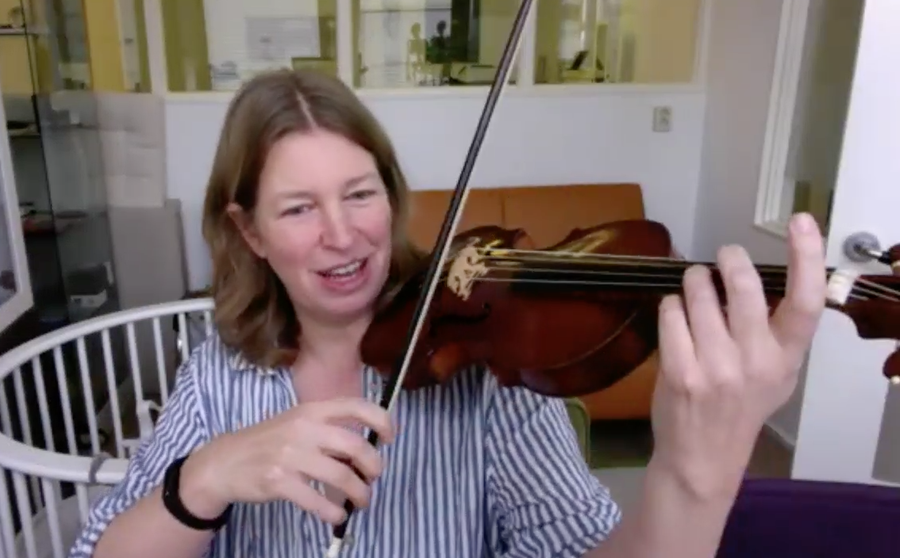
We also discussed the fact that so many baroque players nowadays play with the violin hanging downwards. I can not imagine that they do this consciously, as it is so much against physics, and the gravity makes everything so much harder. Of course there are paintings were you see musicians playing like that in early times, but there are also enough paintings with violinists keeping the violin horizontally. I think that in older times of course there also were more skilled and less skilled musicians, and probably the payers with the violin having down were not the more skilled ones, I think. The fact that for James so many things now improved (easier shifts, trapezius muscles less tired, different right arm technique), is reinforcing my ideas about this. What do you think?
And for viola I think the same, even if you have a big and large instrument. I think playing horizontally is lighter and healthier for viola players than hanging the instrument downwards. At least, on my viola I do that and I don’t mind playing a Messiah like that for 3 hours. What do you think? I like to hear from ‘real’ viola players their opinions, as I am only a violinist playing sometimes the viola.
In my opinion, playing violin and viola is not at all ‘unnatural’, what some people say that it is. It feel in fact perfectly symmetrical. Like playing recorder (in the centre of your body), but than with the arms open: one to the left one to the right. I think it really is possible to play many hours per day for many years in a row, without developing injuries, if you do it in a healthy and conscious way.
James and me agreed that in the end, it’s not so important if you se a shoulder rest or not (I like the sound better without, but ok…). It’s much more important to find this nice balance between collarbone, left hand and bow, and being able to play with a free neck area and with the instrument in an optimal position (which we think is horizontally). I really hope that this experiment will teach that balance to you. Keep going and don’t get stuck at the difficult 5th lesson with the glissandi :-)…
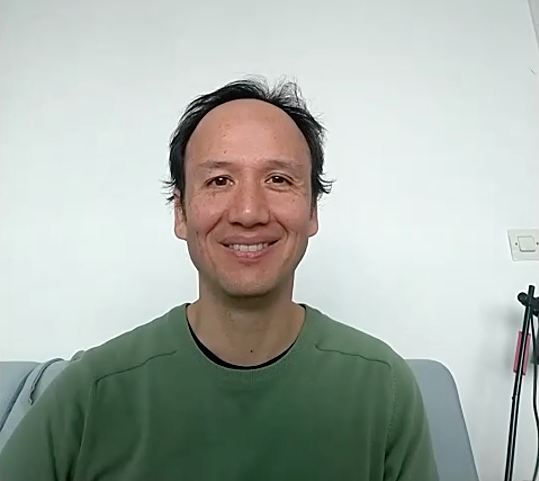
James also added that what he likes about this experiment, is actually that it is an experiment. We are looking for what works for whom. That is the spirit with which the early music development started, but what we sometimes seem to lose now, as students just want to ‘do what their professor sais’. Just copying. James thinks that therefore this experiment is very valuable. Thanks, James! And thanks, Cindy!
Please take your time
It is important that everyone in this experiment enjoys the curiosity we have, and take part in a joyful and playful way. In that way, we learn the best. Don’t try too much to ‘do it right’…and don’t hurry. If you need more time, just let me know, keep me informed, and we take a bit longer. No problem!
Best regards, please let me know if you have questions,
Esther Visser
